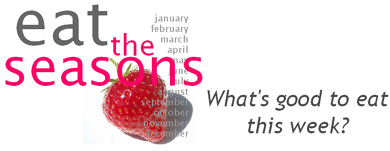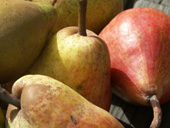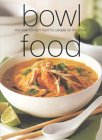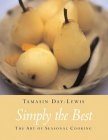
UK/Ireland
•Canada/USA
________________________________________________________________________

eat
pears
Another wonderful fall
treat, pears come in a range of flavors and textures and can be enjoyed
in many different ways (other than as a delicious snack on their own).
Exceptional when poached with red wine and vanilla, they are also stunning
with chocolate as in the classic French dessert Poires Belle Hélène
(see PICK OF THE RECIPES). Alternatively try them in salads or add to
an after-dinner cheese board; they go particularly well with Pecorino
or Roquefort.
HISTORY
The cultivation of pears goes back some 4,000 years. It is likely that they originated in the Caucasus region from where they spread west to Europe and east to Asia.
In Ancient times the pear was considered superior to the apple and outnumbered it in varieties grown. By 300 B.C. techniques such as grafting and cross-pollination of pears were known in Greece.
The Domesday Book of 1086 refers to pear trees as boundary markers in England, suggesting their cultivation at this time.
Pear varieties were greatly improved during the eighteenth century, largely by horticulturalists in France and Belgium. The number of varieties growing in Britain rose from 64 in 1640 to over 700 by the late nineteenth century.
BIOLOGY
Like its cousin the apple, the pear (Pyrus communis in Europe) is a member of the rose family. Botanically speaking a pear is a type of pome - a false fruit in which five carpels (the true fruit) form a core containing the seeds.
NUTRITION
Pears are a very good source of dietary fiber. They are rich in sugars and contain small amounts of phosphorus and vitamins A and C.
TIPS
BUYING
Pears are usually picked when slightly under-ripe and they improve in
texture and flavor after picking. Ripe pears have an inviting fragrance
and yield to gentle pressure at the stem end but slightly firmer pears
are usually preferable for use in cooking.
Choose pears that are undamaged and well-colored. Russeting (a matt brown speckling on the surface) is normal on many pears.
STORING
A pear's window of optimum ripeness is smaller than that of apples. Store
at room temperature to accelerate ripening and refrigerate ripe pears
or those you won't be using for a few days.
PREPARING
Prepare pears as you would apples, starting with a brisk scrubbing under
running water. Rubbing cut surfaces with lemon helps prevent discoloration.
The pips contain amygdalin - a compound that the body breaks down into
hydrogen cyanide, although you'd probably need to eat your body weight
in pears to receive a lethal dose.
Cooking times for pears vary depending on variety, ripeness and desired consistency. Test for doneness with a skewer. We find that if you start with firmish pears you can usually cook them for some time longer than recipe recommendations without detrimental effect.
OTHER STUFF
The Anatomy of Dessert, an out-of-print book by Edward Bunyan, is a poetic celebration of English fruits and desserts in the early twentieth century. In it Bunyan writes:
"It is, in my view, the duty of an apple to be crisp and crunchable, but a pear should have such a texture as leads to silent consumption".
PICK OF THE RECIPES
in
season:
january
february
march
april
may
june
july
august
september
october
november
december
main regions:
Pacific Northwest
ONLINE
-
Belle Hélène (and other mouthwatering pear recipes)
IN PRINT
-
Chocolate Pear Pudding
Very Simple Food -
Pear and Walnut Salad with Lime Vinaigrette
Bowl Food -
Sticky Gingerbread and Poached Pears
Simply the Best: The Art of Seasonal Cooking


